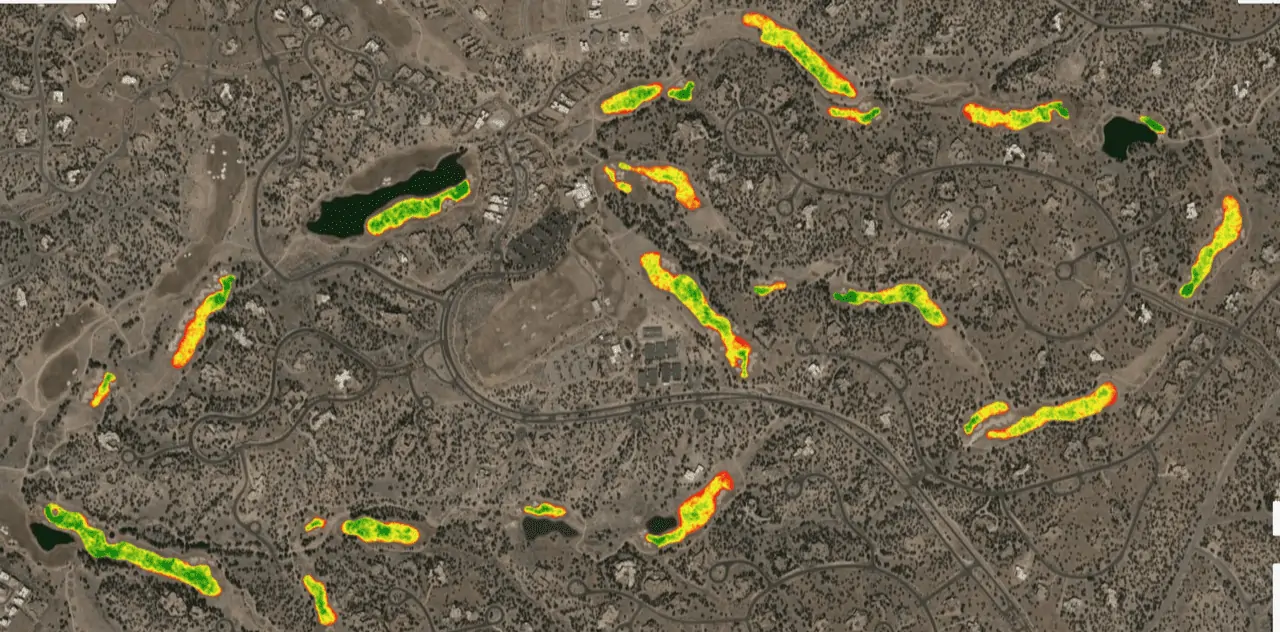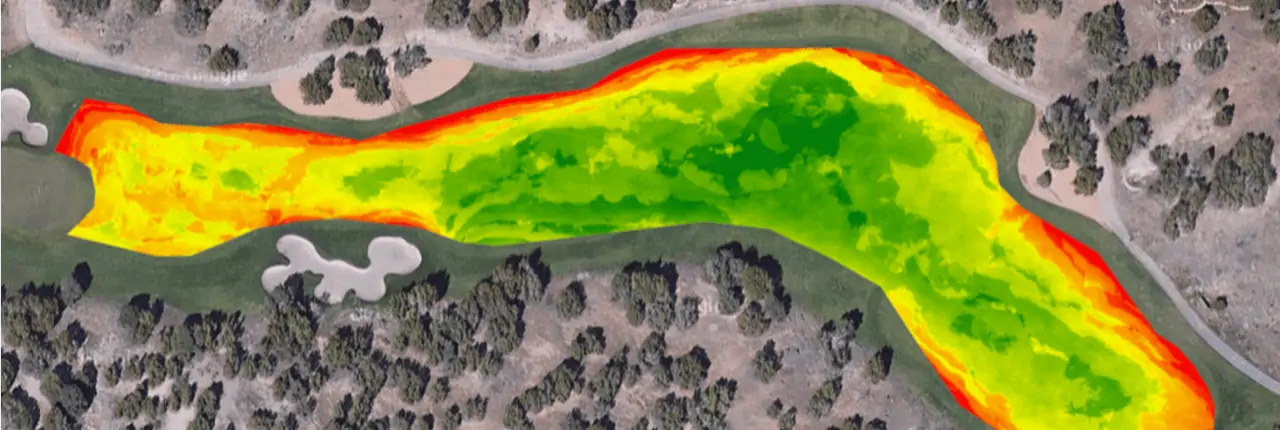First tests for water management via satellite
The topic of water is what drives Tom Egelhoff. Daily. And that for years. His workplace, The Club at Las Campanas, is located at over 2000 meters in the mountains of New Mexico in the USA. If you ask Tom Egelhoff how much it rained this March, he forms a zero with his thumb and forefinger. “The rainfall here has been steadily decreasing in recent years.” The average amount of rain in recent years was 457 millimetres. Up here, one speaks of the so-called high desert. It is rocky, mountainous, juniper and cholla cactus grow.
Water consumption becomes a budget issue
“Our daily goal is to produce first-class playability and keep the costs for the water low,” explains Egelhoff. The Club at Las Campanas consists of two highly-decorated Jack Nicklaus Signature courses that are part of one of the extremely exclusive Platinum Clubs of America. In this respect, Egelhoff uses a system for greenkeeping that does not exist in German-speaking countries: 44 greenkeepers look after the two golf courses. Each of the two courses has a four-row sprinkler system, each with between 2000 and 3000 sprinklers. Around 700,000 m³ of water are used annually to keep the courses in top international condition. This is extremely expensive because 50 percent recycled water is purchased. The other half comes from the Rio Grande.
The combination of the standards of a top American facility and the challenges of increasing New Mexico drought has made The Club at Las Campanas a club where water management is a daily project. For three years, the USGA experimented with an irrigation system for the tees that would be laid below the surface of the grass. Since the beginning of the year, attempts have been made to use Greenway , a GPS-based system for measuring soil moisture that identifies weak points in the irrigation of the field.
Development in Germany
Greenway was developed in Germany by Erik and Lukas Kaiser, who, together with experts from the fields of earth observation, data science, geosciences and IT management, want to improve the possibilities for improving the maintenance of golf courses. The trick: By using digital measuring points, the use of mobile moisture sensors and built-in soil sensors can be dispensed with.. With the help of satellite-based recordings of golf courses, the health of the lawn and soil is determined on the one hand, and the distribution of moisture is also localized on the other.
Avoid overwatering
“The biggest surprise was actually the overwatering,” sums up Tom Egelhoff, who, like the superintendent of the German golf course St. Leon-Rot, Daniel Lüttger, has been testing Greenway since the beginning of the year. “We quickly located the sprinklers that were putting out too much water and were set incorrectly.” In Las Campanas, two greenkeepers deal with nothing else every day than the individual configuration of sprinklers. According to Egelhoff, Greenway saved him the six-hour task of measuring the moisture in the soil with the mobile moisture meter. Measurements were taken twice a week. Instead, Egelhoff now uses the imaging to identify where the critical points are on the courses.
In the German GC St. Leon-Rot, this work saving does not apply: “Up until now, we have only measured the moisture on the greens,” explains Daniel Lüttger. The personnel and financial effort that is required for US top golf courses cannot be implemented in the comparatively significantly cheaper German top clubs. “At the moment we are still learning from the Greenway system,” Lüttger sums up. Here too, satellite imaging has only been in use since the beginning of the year. “It would be ideal if we could import our sprinklers into the digital map, so that it would be possible to see exactly what is happening in the vicinity of the individual sprinklers.”
The Greenway project illustrates how strong the influence of digitization is in international water management on golf courses. The example of Las Campanas also makes it clear that the approaches to saving water have to be far more comprehensive. In recent years, the New Mexico facility has reduced the irrigated area of its courts from around 36 hectares to 24 hectares. Thousands of sprinklers have been eliminated. Instead of an irrigated grass area, the typical desert vegetation was reintroduced. Storage ponds have been optimized. Water in any form is monitored in detail here. Three weather stations alone are responsible for part of the data delivery.
Water management goes digital
The attempt to make top golf possible in the desert-like climate at over 2000 meters in New Mexico would probably fail without exploring all technical possibilities in view of the increasing drought. At GC St. Leon-Rot, the initial situation is far less extreme. But the issue remains the same: water management on golf courses has long since become a core issue affecting quality, playability and finances. Whether in New Mexico or Heidelberg.








